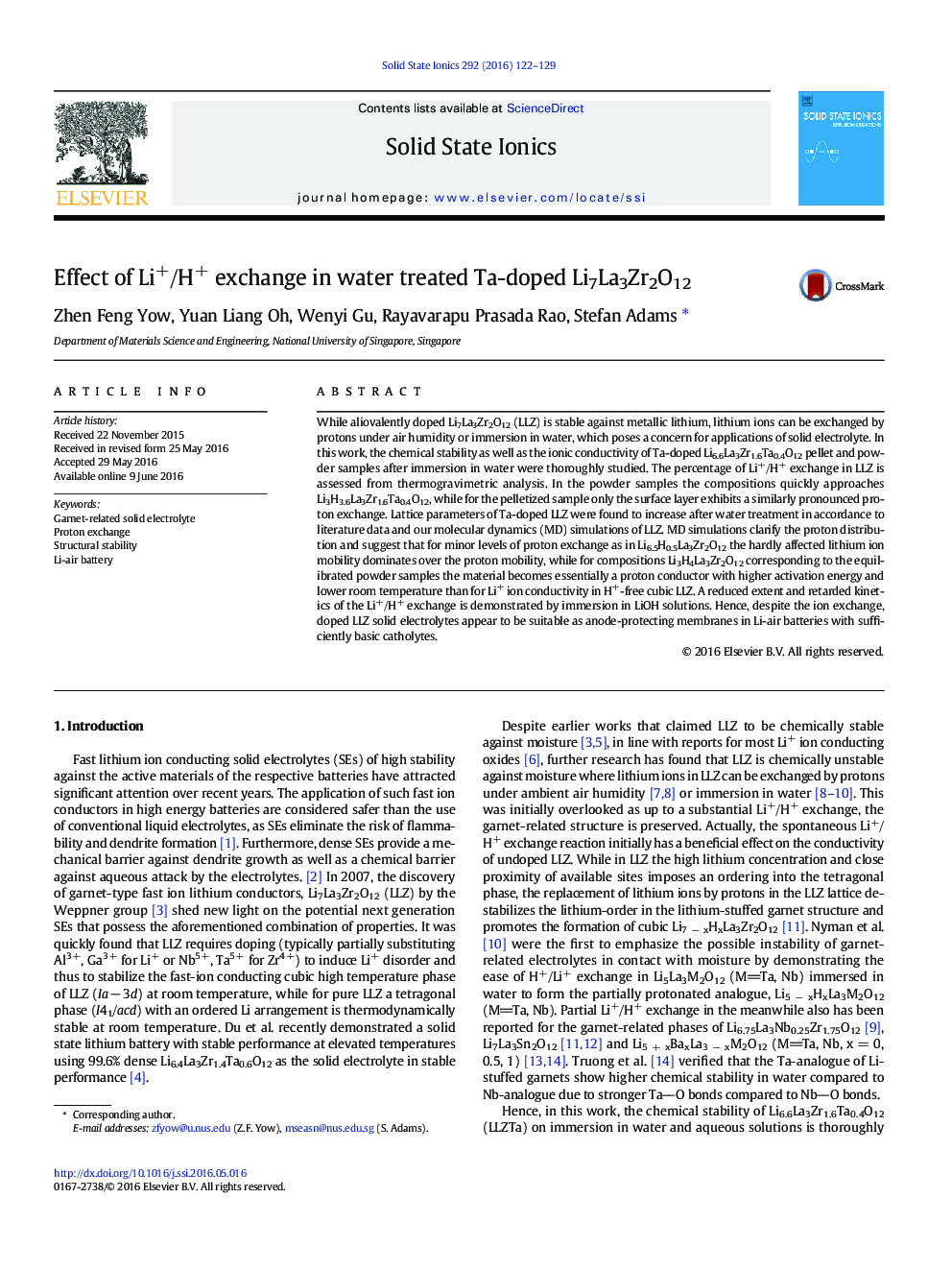| Article ID | Journal | Published Year | Pages | File Type |
|---|---|---|---|---|
| 1296063 | Solid State Ionics | 2016 | 8 Pages |
•LLZTa garnets retain cubic garnet structure on immersion in water or LiOH.•Partial Li+/H+ exchange on immersion quantified by XRD, FTIR, TGA and pH•On long-time immersion in H2O or 1 M LiOH ca. 3 or 5 Li are retained, respectively.•MD simulations show progressive conversion from fast Li+ to moderate H+ conductor.•The remaining Li+ preferentially occupy regular tetrahedral garnet sites.
While aliovalently doped Li7La3Zr2O12 (LLZ) is stable against metallic lithium, lithium ions can be exchanged by protons under air humidity or immersion in water, which poses a concern for applications of solid electrolyte. In this work, the chemical stability as well as the ionic conductivity of Ta-doped Li6.6La3Zr1.6Ta0.4O12 pellet and powder samples after immersion in water were thoroughly studied. The percentage of Li+/H+ exchange in LLZ is assessed from thermogravimetric analysis. In the powder samples the compositions quickly approaches Li3H3.6La3Zr1.6Ta0.4O12, while for the pelletized sample only the surface layer exhibits a similarly pronounced proton exchange. Lattice parameters of Ta-doped LLZ were found to increase after water treatment in accordance to literature data and our molecular dynamics (MD) simulations of LLZ. MD simulations clarify the proton distribution and suggest that for minor levels of proton exchange as in Li6.5H0.5La3Zr2O12 the hardly affected lithium ion mobility dominates over the proton mobility, while for compositions Li3H4La3Zr2O12 corresponding to the equilibrated powder samples the material becomes essentially a proton conductor with higher activation energy and lower room temperature than for Li+ ion conductivity in H+-free cubic LLZ. A reduced extent and retarded kinetics of the Li+/H+ exchange is demonstrated by immersion in LiOH solutions. Hence, despite the ion exchange, doped LLZ solid electrolytes appear to be suitable as anode-protecting membranes in Li-air batteries with sufficiently basic catholytes.
